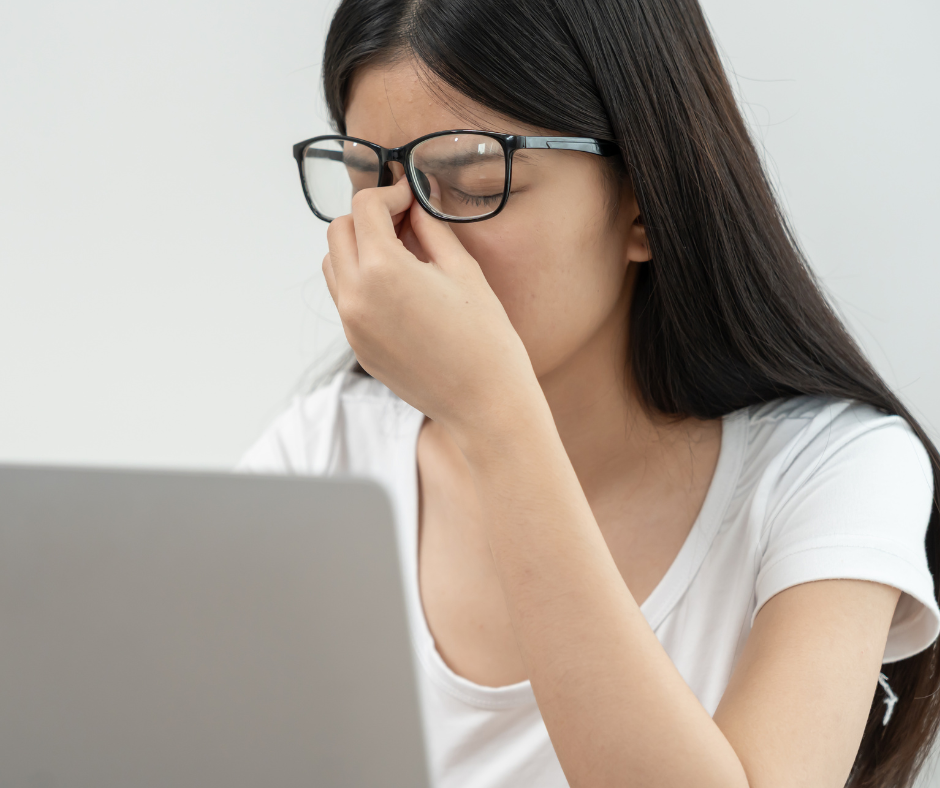
18 Nov Dry Eyes & Indoor Heating: Why Winter’s Coming Means Eye Discomfort
Winter in Canada can be harsh on more than just your skin—it can take a toll on your eyes too. Cold winds, dry indoor heating, and reflective snow all contribute to eye discomfort, leaving many people with dry, irritated, or even blurry vision during the colder months. Understanding why these issues arise and how to protect your eyes can make a world of difference in comfort and long-term eye health.
Why Winter Challenges Your Eyes
Several factors make winter particularly challenging for eye health. Shorter daylight hours and reduced sunlight can strain your eyes indoors, while dry air from heaters and furnaces pulls moisture from the surface of the eyes. Snow and ice reflect ultraviolet (UV) rays, increasing the risk of corneal damage. For people already prone to dry eye syndrome, these conditions can exacerbate irritation, redness, and burning sensations.
Indoor Heating And Dry Eyes
Indoor heating is one of the most common culprits of winter eye discomfort. Furnaces, space heaters, and radiators lower humidity in homes and workplaces, causing tears to evaporate more quickly. This can lead to a feeling of dryness, itching, or the sensation of sand in the eyes. Over time, persistent dryness can strain the eyes, reduce comfort, and even impact vision clarity.
Simple Strategies To Combat Indoor Dryness
- Use A Humidifier
Adding moisture to the air is one of the easiest ways to relieve dry eyes. Portable humidifiers in bedrooms or main living spaces can help maintain a comfortable humidity level, ideally between 40-60%. If you don’t have a humidifier, placing a bowl of water near a heater or radiator can offer a similar effect.
- Hydrate Your Body
Dry eyes are often a reflection of overall dehydration. Drinking sufficient water throughout the day and consuming water-rich foods such as cucumbers, oranges, and tomatoes helps maintain tear production and eye moisture. Limiting caffeine and alcohol can also prevent further dehydration.
- Blink Consciously And Take Breaks
Extended screen use slows blinking, which accelerates tear evaporation. Make a habit of blinking deliberately every few minutes and follow the 20-20-20 rule: every 20 minutes, look at an object 20 feet away for 20 seconds. Small breaks and gentle eye exercises can reduce strain and refresh tired eyes. - Artificial Tears And Lubricating Drops
Over-the-counter preservative-free rewetting drops can provide immediate relief for dry, burning, or itchy eyes. Keep a small vial at work or in frequently heated rooms for regular use. Consult an eye care professional to identify a formula that suits your needs.
Protecting Your Eyes Outdoors In Winter
Cold weather, wind, and snow reflectivity can worsen eye discomfort and contribute to long-term damage. Consider these tips:
- Wear UV-Blocking Sunglasses: Even on cloudy days, UV rays reflect off snow and ice, increasing the risk of cataracts and other eye conditions. Polarized lenses can also reduce glare.
- Wraparound Glasses Or Goggles: Protect your eyes from harsh wind and prevent moisture from evaporating too quickly.
- Layer Clothing And Accessories: Scarves, face masks, and hats protect both skin and eyes from extreme cold.
Managing Light Sensitivity Indoors
Winter lighting, including glare from screens and bright indoor lamps, can intensify eye strain. Adjusting your workspace can help:
- Dim harsh lights or use softer, indirect lighting.
- Reduce screen brightness and keep monitors at eye level.
- Consider photochromic or tinted glasses to minimize glare.
Lifestyle Habits To Support Eye Health
Beyond environmental adjustments, several lifestyle habits can improve comfort and maintain healthy eyes during winter:
- Balanced Diet: Nutrients like omega-3 fatty acids, vitamins A, C, and E, and leafy greens support tear production and overall eye health.
- Regular Exercise: Daily activity improves circulation and reduces systemic conditions like diabetes and hypertension that can impact eye health.
- Adequate Sleep: Rest allows eyes to repair and recover from daily stressors, including screen exposure and environmental dryness.
Proactive Care And Monitoring
Being proactive with eye care is key. Regular check-ups can detect early signs of dry eye, irritation, or more serious conditions such as glaucoma or cataracts. Early intervention is far more effective than reactive treatments. Track any changes in vision, burning sensations, or excessive dryness and discuss them with an eye care professional promptly.
Conclusion
Winter may bring dry air, cold winds, and harsh lighting, but small, consistent steps can protect your eyes and reduce discomfort. Using humidifiers, staying hydrated, taking screen breaks, and protecting eyes outdoors go a long way toward keeping them healthy and comfortable. Simple lifestyle habits—nutrition, sleep, and exercise also strengthen overall eye resilience.
Winter dryness can take a toll on your eyes, but professional care ensures comfort and protection. At Dr. D’Orio Eyecare, we offer personalized solutions for dry eyes and other seasonal eye concerns. Book your appointment today at drdorioeyecare.com/book-appointment or call 416-656-2020 (Toronto) or 416-661-5555 (North York). Keep your eyes healthy and comfortable all winter long.


